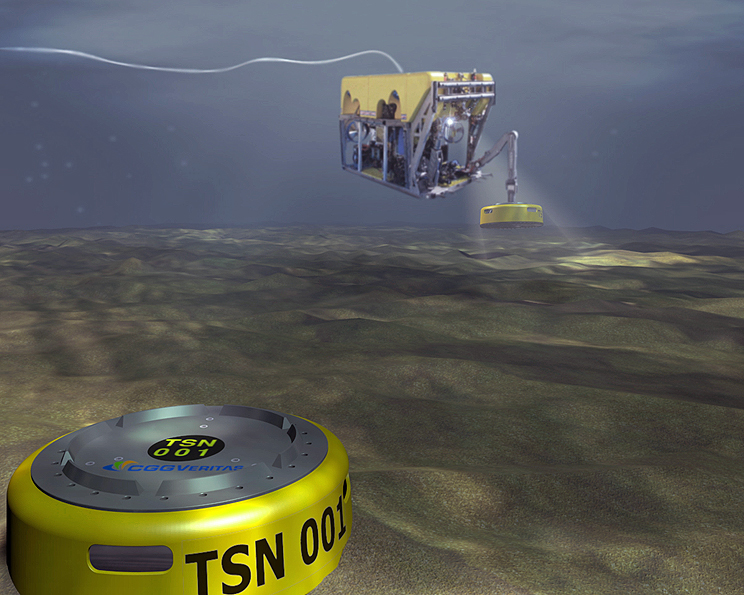
CGGVeritas is confirming its commitment to the emerging deepwater node market with an order to manufacture an additional 800 Trilobit four-component (4C) ocean bottom nodes (OBN) to make a total of 1,000 units in its equipment pool. The new nodes are expected to be commercially available by early 2012.
Trilobit is a field-proven, proprietary seabed seismic acquisition system developed by CGGVeritas and successfully used on programs in the North Sea, Gulf of Mexico and Asia-Pacific. The acquisition system is a flexible, containerized design which can be rapidly mobilized on most ROV (Remotely Operated Vehicle) vessels.
As a four-component node with a compact integrated architecture, Trilobit provides high vector fidelity for accurate and repeatable seismic records. These are a necessity for reservoir monitoring applications and for full-azimuth multi-component imaging and inversion including imaging through salt, basalt and gas.
In addition, the use of a proprietary and efficient ROV deployment and recovery system makes Trilobit ideal for imaging under platforms or in areas inaccessible to traditional towed-streamer and ocean bottom cable (OBC) acquisition systems.
The comprehensive Trilobit solution leverages a CGGVeritas multi-disciplinary, turnkey approach to OBN acquisition. This approach includes feasibility studies, survey design, equipment and acquisition program management, in-field processing, market-leading CGGVeritas multicomponent processing, and interpretation by the company’s Hampson-Russell reservoir services group.
Lionel Lhommet, Executive Vice President, Geomarkets & Global Marketing, CGGVeritas, said: “Our decision to embrace the growing seabed market with a commercial offering of Trilobit nodes reinforces our business strategy as the market leader of fully integrated geophysical solutions to simplify complex acquisition from program inception to completion, delivering excellent technical and HSE results. Trilobit provides our clients with a distinctive, seamless data acquisition and processing experience that can enhance and combine with their existing 3D streamer, OBC or permanent reservoir monitoring programs to provide a more complete view of the subsurface for enhanced exploration, field development and reservoir optimization.”